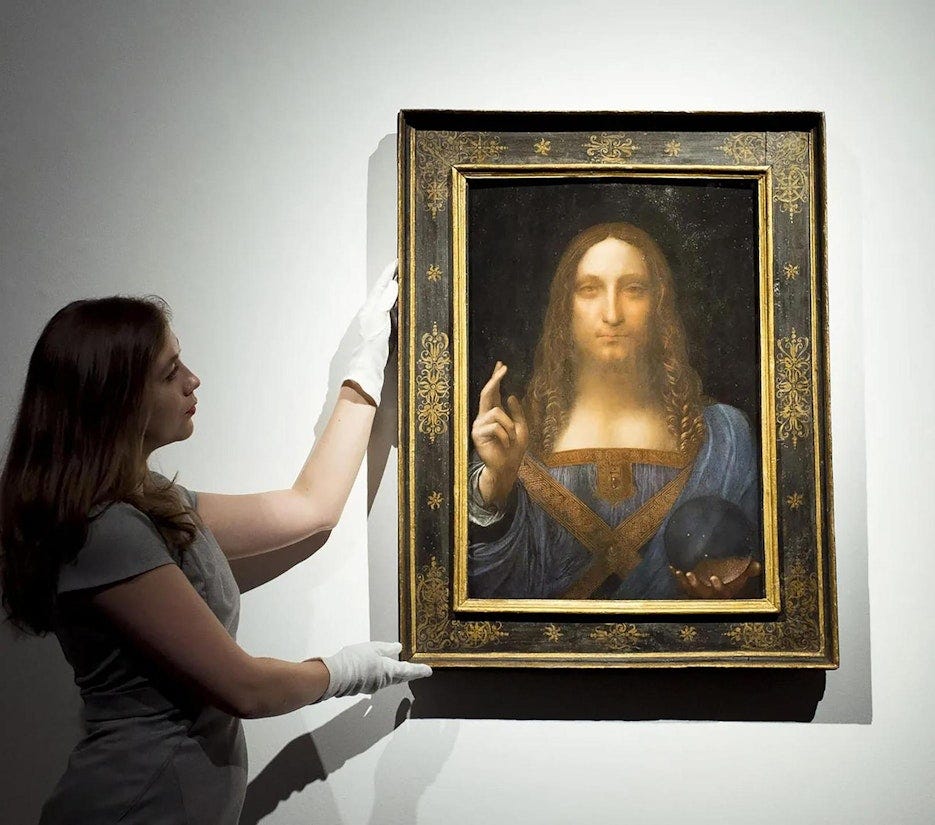
Over dinner recently, I was asked by the lady on my left, “What opportunities do you see in the art market today?” I demurred. She pressed, “Where would you have wanted to buy in the marketplace over the past few years?” I felt fairly sure where the question was directed, but wanted to be sure.
“What’s your aim when buying art? What are you looking for in an opportunity?” I countered. Then came the dreaded “i” word: “investment”.
My dinner companion saw buying art in terms of financial return, a rational value-based approach. “Ah. Well, if you are serious about investment, don’t buy art,” I replied.
She was rather disappointed. No doubt she imagined I would reveal some clever Brazilian artist whose art is under-appreciated, affordable and will increase in value over the next few years, as if buying paintings by a certain artist was like buying shares in Apple or Barclays.
This is the “art investment” opportunity model. Then there is the “Antiques Roadshow” opportunity — someone submits a forgotten or straightforwardly ordinary object for valuation and it turns out to be extremely valuable when sold at auction. However, for a financial return, owning the object depends, mostly, on inheritance and good fortune.
For major financial reward, there is the “sleeper” opportunity model, which is when a work is bought for a fraction of its “true” value, and thus requires one of the parties to the sale to overlook the true quality and value of said work.
But this usually requires decades of highly specialised connoisseurial training. The most famous example is the rediscovery of Leonardo’s Salvator Mundi, bought in New Orleans in 2005 by two specialists for about $1,000 and later sold to the Swiss agent Yves Bouvier for tens of millions of dollars. It was subsequently re-sold at auction at Christie’s New York in 2017.
In 2020 a large portrait of Louis XIV after Rigaud (catalogued as “French School, 19th century”), of which more than 50 versions are known, sold in France for €55,000. It was cleaned and restored and sold at Christie’s London — catalogued as “Studio of Rigaud” — in July 2023 for £1.9m. Quite a result for a picture not even considered to be by the master.
Finally, there is the “layer cake” model: this is how old-fashioned dealer networks operate, although internet auction sales have largely eroded this time-honoured system.
Dealer A buys a work for £10 and sells to dealer B for £25 who sells to dealer C for £50 and so on until the — usually smart, city-based — shop (often called a gallery) with a good reputation sells to a private owner or institution for a multiple of the purchase price.
I tried to buy a pair of red japanned cabinet-on-stands in Hamburg; so did everyone else
As this system works on pure profit, if the retail shop can find (usually at an online auction) and buy said work for as little as possible, the layers in between are removed, resulting in a greater profit.
The problem with the layer cake model today is that those “diamonds in the rough” are easily discoverable. Prolonged bidding wars are usual. I tried to buy a pair of red japanned cabinet-on-stands which came up for sale in Hamburg. So did everyone else: they ended up selling for over €400,000.
Back to the “art investment” opportunity model. Broadly, there are three methods — the first is to buy a blue-chip work of art at or just below market value, around the £3m mark is fine. Then approach an art finance bureau, who usually offer 50 per cent loan-to-value, and invest £1.5m in equities, bonds or other familiar financial products.
Hold and sell when the time is right. The second approach is to buy the same sort of blue-chip work of art as the previous example, sell shares in it, and then re-sell the work at auction but insist on a guarantee which is higher than the purchase price.
This approach will work only if no one else knows about the work of art before it is consigned to auction. The disgraced art investment agent, Inigo Philbrick, tried this but over-sold the number of shares, and eventually ended up in a US prison (for more on that story see this book).
The third approach is the contemporary collector model: buy a wide mix of art by up-and-coming artists, live with it all, and put into store what you can’t fit in your house. Wait 20 years and then sell — some of it may be valuable.
As with all investments, choosing the right moment to sell is critical. Selecting that moment can be difficult: there are very few buyers at the top end of the market. However, it takes just two buyers to create delight, only one for success and none for failure.
Art market buyers are notoriously fickle, and when they are full up they usually stop. When art is classed as an investment, the motivation to possess or sell a work becomes rational, not emotional.
This article is taken from the March 2025 issue of The Critic available here



